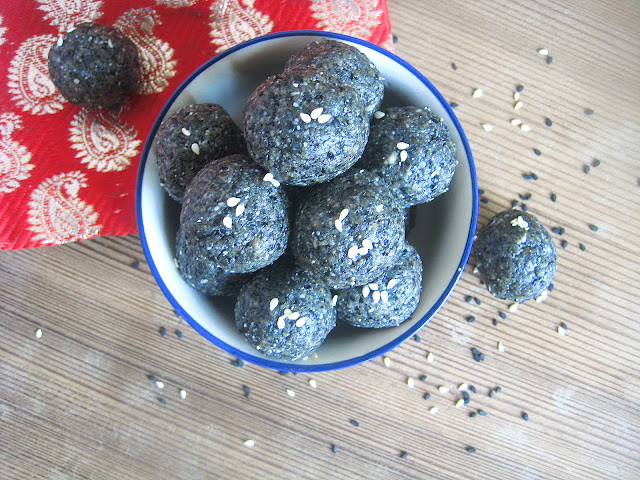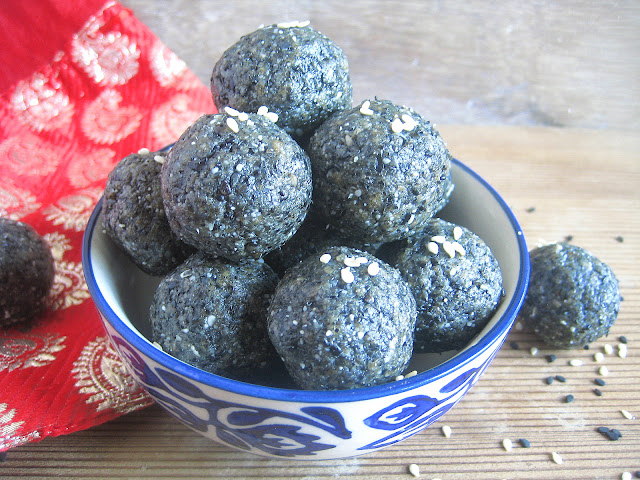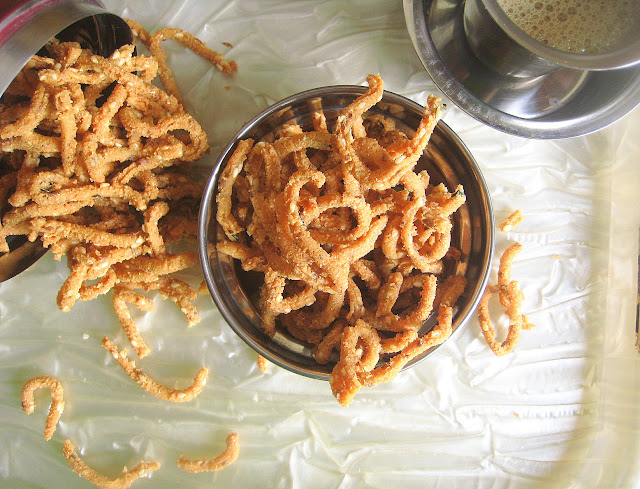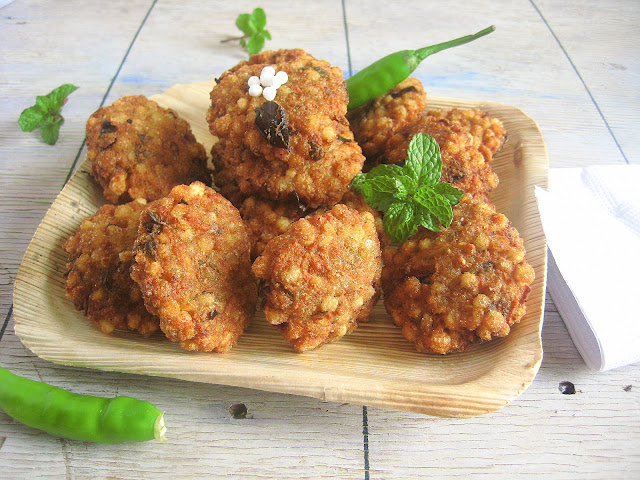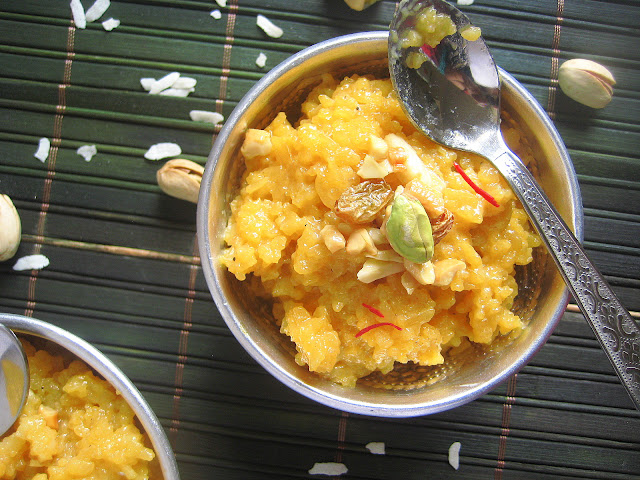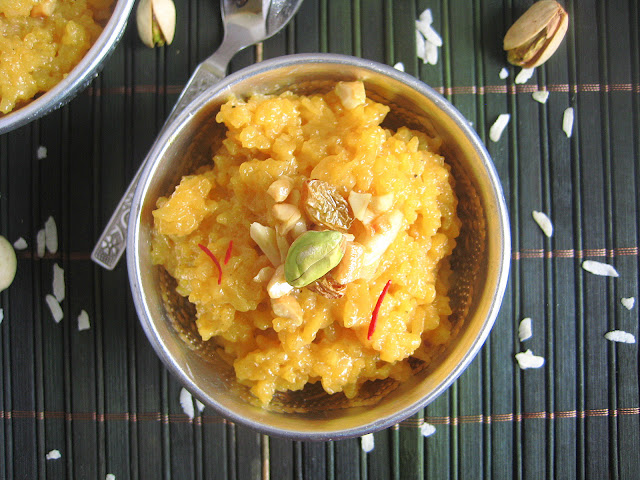Sesame Laddu / Black Sesame Ladoo / Chimmili / using Jaggery
Chimmili
or also known as nuvvula undalu ( sesame sweet balls )
is the famous dish of the Telugus from Andhra Pradesh and Telangana. This is especially prepared on the occasion of
Nagula Chavithi that falls on the 5th day after Deepavali. On this auspicious
day of Nagula Chavithi people go the snake hills and perform puja. They offer
Prasadam, eggs and milk and pray to the pious snakes.
I wanted
to prepare this sweet since a long time. It so happened that when I went to my
maternal uncle´s place, I met a good friend of his who is an Ayurvedic doctor
by practice. He had suggested the consumption of this sweet on a daily basis
for healthy bones. He insisted on the usage of black sesame seeds and jaggery. Since then, I had the ingredients ready, but it was just
that I did not focus much on it.
Now on
this auspicious day, I have planned to prepare this as Naivedhyam to the Snake
God. We are using black sesame seeds in the preparation of this sesame sweet.
Basically, chimmili is prepared with white sesame seeds, but keeping in mind
the doctor´s suggestion, I prepared this using both the black and white sesame
seeds. Black sesame seeds are more healthier than that of the whiter version.
Black sesame seeds are the original sesame seeds. They are washed thoroughly
over and over again. They are then dried and put in the mill to extract the oil from them. The remaining fiber content after removing the oil from the sesame seeds is known as telaga pindi in Telugu. This telagapindi is also rich in calcium and considered to be very healthy and is hence used in the preparation of
many curries. We prepare pindi
vadiyalu with this so called telaga pindi.
Coming
back to our recipe, just three ingredients go into the preparation of chimmili
- black sesame seeds, white sesame seeds and jaggery. The making of chimmili is
also very easy. Nuvvula undalu is also similar to the chimmili in the taste.
But it differs on the terms of texture and preparation. Nuvvula undalu is made
with jaggery syrup and the sesame seeds are not grounded to a powder. But in
chimmili, the sesame seeds are grounded to a coarse powder and mixed with
grated jaggery. They are then given shapes and offered to Snake God as
Prasadam. You can also refer to my other healthy sweets that should be had on a
daily basis.
Preparation
Take
black sesame seeds in a pan. Dry roast them on a low flame for 2-3 minutes.
Transfer to another plate.
In the same pan, dry roast the white sesame seeds
and fry on a low flame for 2-3 minutes. Switch off the flame and allow them to
cool completely.
Meanwhile, grate the jaggery or make a powder in the mixie jar
and keep aside. When the sesame seeds come down to room temperature, make a
coarse powder of them in the mixie jar. Do not run the mixie jar for a long
time as the sesame seeds will release the oil completely. Just pulse it for a
few seconds each time until you get a coarse powder.
Transfer to a big plate
and mix the sesame seeds powder, salt and jaggery.
Mix well. If you are unable
to mix it evenly with your hand, then transfer the entire contents to a big
mixie jar and run for a few seconds to get it mixed evenly. Give shapes to the
resultant mixture and store in an airtight container. Consume each ball a day (
morning or evening ). This kale til ke ladoo is especially advised for all the ladies for healthy
bones.
Ingredients
White
sesame seeds 1 cup
Black
sesame seeds 1 cup
Jaggery 1 1/2 cups
Salt a
pinch
Method
- Dry roast the black sesame seeds and white sesame seeds separately one after the other.
- Allow them to cool completely.
- Mixie the sesame seeds to a coarse powder.
- Add jaggery and mixie once again for even mixing of the jaggery with the sesame seeds powder.
- Give shapes as round balls and store in an airtight container.
Notes
- You can also add half a teaspoon of cardamom powder while mixing.
- A pinch of salt should be added to these chimmili balls to equalise the taste of the jaggery.
- There is no requirement of ghee as sesame seeds have oil in them which help to give shapes easily to the chimmili or the nuvvula undalu ( sesame seed balls ).
- Dry roasting the sesame seeds is optional. You can start off with grinding the seeds and mixing with the jaggery to prepare this delicious til ke laddu.

